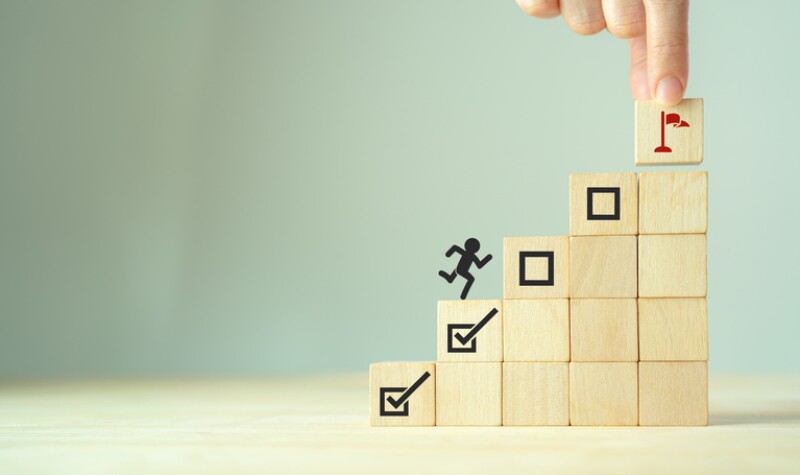Marie-Hélène Pelletier is an award-winning workplace mental health expert, psychologist, executive coach, speaker, and author of The Resilience Plan: A Strategic Approach to Optimizing Your Work Performance and Mental Health.

With an understanding of the intersection between business success and strong workplace mental health, Pelletier brings a signature mix of business and clinical expertise to the groups she works with by translating psychology research into strategies that professionals, business leaders, and their teams need to thrive.
In this interview, Pelletier shares her advice on how to build a resilience strategy specifically for young professionals.
TWA: In your book The Resilience Plan, you emphasize the importance of having a resilience strategy. How does this apply specifically to young professionals facing layoff anxiety?
MHP: We develop a strategy for most important work initiatives, and I have found in my work that applying the same approach for our resilience both resonates with professionals and leaders and is highly effective. Just like any strategy, we want to align it with our particular goals, values, and context. Applying a resilience strategy to young professionals facing layoff anxiety will vary for each person’s unique context. Some common characteristics often shared include thinking that, if they do excellent work, it will protect them fully, putting their physical health and connections second.
One example of a resilience strategy might include, as it did for one young professional I was coaching recently, the following three pillars and actions: 1) realistic mindset: remind myself every day that layoffs can happen and is not something I can control but I have control over how I prepare and how I frontload on my resilience; 2) physical health actions focused on resilience: commit to doing 15–30 minutes of fast walking (cardio) 5–7 days per week; 3) connections: ensure that I schedule one to two conversations each week with people in my network to learn about their company and their work and potentially share my interests.
TWA: Many young professionals tie their self-worth to their jobs. How can they shift away from defining their self-worth solely by their jobs while staying engaged and motivated at work?
MHP: It’s very normal and healthy to derive a sense of identity and self-worth from our work; we just want to ensure it is not the only or even the main source. If we leave it all there, we allow our worth to be defined externally, in effect giving a lot of power to our job (not to mention it is not realistic or fair).
One approach is to step back and reflect on your own definition of your worth, what are 10 positive qualities you possess as a professional? List three concrete examples that illustrate each. With this, you are turning the power to you, making your self-worth intrinsic. And you can continue to be engaged and motivated at work. But, even when you are, remember that your self-worth was the same before getting this job and will be the same if you’re ever not in it.
TWA: What are the key components of a resilience plan that young professionals should build early in their careers?
MHP: Ah, great question. Love the idea of starting your career with this. It is why so many university bookstores carry The Resilience Plan. It’s also what motivates many employers to bring me in to speak with their emerging leaders and early career professionals. First, keep in mind that each person’s resilience plan will be different, even if they share the characteristic of being early career, for example being very keen to prove themselves and do things right, having less experience with numerous demands that may need to be prioritized and balanced with self-care, and feeling isolated. That said, here is an example of a three-pillar plan that I was recently discussing in one of my keynotes Q&A with the audience: 1) mentorship: find one or more mentors and connect with them at least quarterly; 2) relationships: schedule weekly time with people you enjoy spending time with; 3) meditative activity: find one that works for me (yoga, meditation, tai chi, etc.) and practice it 1–7 days per week
TWA: You talk about the difference between stress and burnout. How can young professionals distinguish between the two and prevent workplace stress from escalating?
MHP: Being proactive is possibly the most powerful approach. Burnout does not appear instantly. It does build gradually, and we will see the signs if we pay attention and not dismiss them (which is what most people do, until they can’t). The three characteristics of burnout are exhaustion, cynicism, and performance problems. Before we get there, we’ll be overextended, not as engaged, and start seeing more things fall through the cracks.
A key difference between occasional stress and burnout is the severity and frequency of these signs. More frequent and severe is what we are watching for. In terms of preventing burnout, we have to keep in mind that there are times when it may be very challenging to prevent, for example because we’re actually already there. Also, keep in mind that burnout is not just in the individual or the workplace, it’s in the relationship between the two. So sometimes, most of what needs to change is our work environment, but it might not change fast enough, so we may need to leave. If we’re catching signs early, then implementing actions and a strategic resilience plan might help prevent problems from escalating.
TWA: What role does workplace culture play in shaping resilience, and how can employees advocate for a healthier environment?
MHP: Resilience is a team sport, and the workplace is a system. So individuals, teams, and the overall organization all play a role. Three suggestions on how to contribute to an even healthier environment. First, get information, ask questions to your leader and HR to learn about the resources, initiatives, maybe the mental health strategy. Second, share your ideas about what else might be helpful. Third, contribute to more communication and modeling how important this is for you by sharing how you invest in your own resilience. Propose to discuss with your team how you can together contribute to each other’s resilience.
TWA: Many professionals hesitate to take risks or pivot careers because of fears of instability. What advice do you have for those who want to explore new opportunities but feel stuck by fears of layoffs?
MHP: The level of risk each person is comfortable with varies; it also varies within one person at different stages of their career given many other variables. This is a situation for which creating a unique strategic resilience plan may be particularly relevant. This one might include pillars and actions such as these: 1) Reflection: explore my motivations on my own or with professional help from a coach, mentor, psychologist, peer; 2) invest in my physical health: protect 30 minutes 5–7 days per week for cardio exercise; 3) Explore: protect 1–2 hours per week to explore what new opportunities I’d like to consider.
TWA: What daily habits or practices do you recommend for maintaining mental wellbeing and career resilience, even in times of uncertainty?
MHP: We do want to invest proactively and maintain actions even more in times of uncertainty. Research points to four areas to invest in first (in no specific order): exercise (cardio, strength training, meditative type of activity), nutrition (Mediterranean diet), sleep (7–8 hours), and relationships. Other variables to consider include time in nature, volunteer work, spirituality.
TWA: Layoff anxiety doesn’t just affect employees, it also affects managers. What advice do you have for leaders who need to keep their teams motivated during uncertain times?
MHP: First, leaders need to walk the talk—easier said than done. Implement the actions we’ve discussed here and share with your team that you are doing this and why. For example, "Yes, I had a good weekend, made sure I went for my run because, given all the demands and uncertainty these days, I make sure I invest in my own resilience." Ask team members to share what they do. Also, having conversations about workplace factors, you might be able to influence, even if it is only in small ways, workload, growth and development, and workplace culture are great places to start.
TWA: Looking ahead, how do you think workplace mental health strategies will evolve to address job uncertainty and burnout?
MHP: Workplaces will likely continue to evolve in three main ways: 1) Stronger integration of mental health strategy with business strategy; 2) increased comfort with and attention to all aspects of human health—physical, mental, and financial, especially in the context of increased presence of artificial intelligence; and 3) broader involvement and better integration of all groups—individuals, teams, and organization—to guide, inform and implement research-based actions that connect with mental health.

